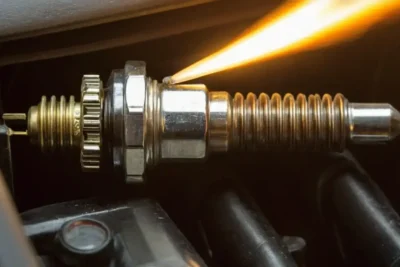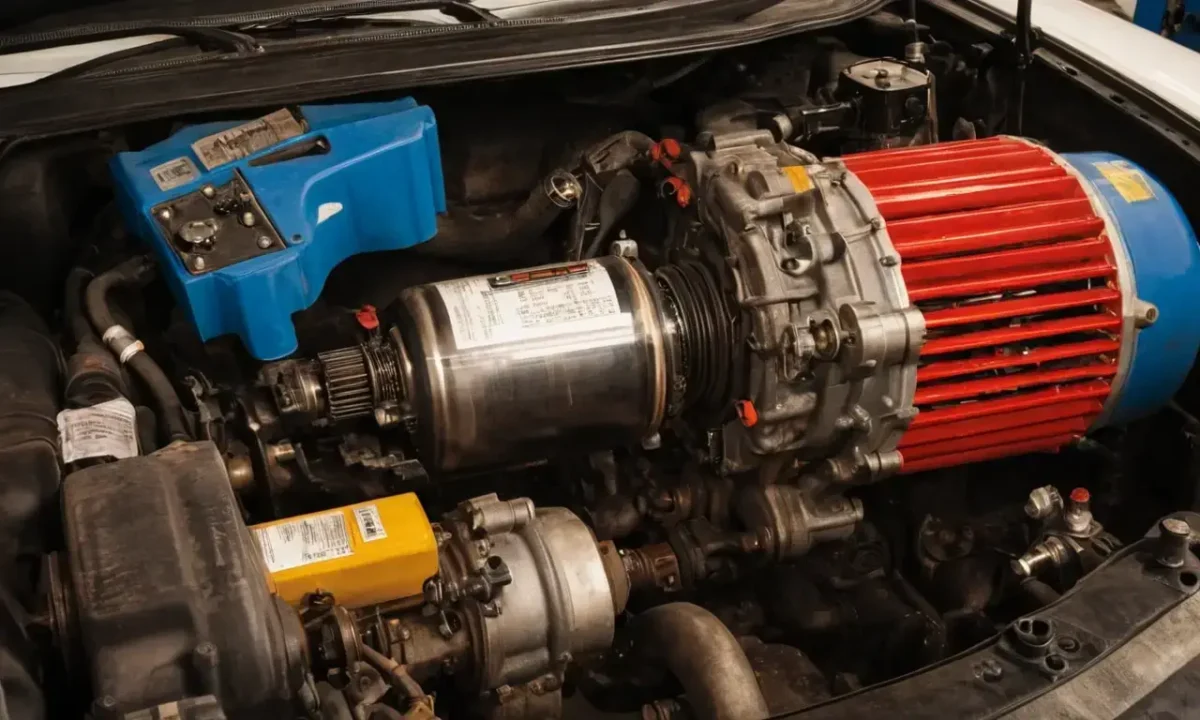
Torque Converter Test: Diagnosing Transmission Issues

A torque converter is a crucial component in automatic transmissions, playing a vital role in transferring power from the engine to the transmission. It acts as a fluid coupling, allowing for smooth gear changes and minimizing shock during acceleration. When this critical part malfunctions, it can lead to various problems, including rough shifting, loss of power, and even complete transmission failure. Diagnosing these issues requires understanding how the torque converter functions and identifying its symptoms. This article delves into the intricacies of torque converters, exploring their importance, common signs of trouble, and methods for diagnosing potential problems. By learning about these indicators, you can better understand your vehicle's transmission health and address any issues promptly.
Importance of Torque Converters
A torque converter is a vital component in automatic transmissions, acting as a fluid coupling that allows the engine to operate at its optimal speed while transferring power smoothly to the transmission. It achieves this by using a pump within the converter to draw fluid from the transmission's input shaft and deliver it to the engine's output shaft. This process creates a continuous flow of torque, enabling smooth gear changes without jolting the vehicle.
The torque converter also plays a crucial role in starting the car. When the engine is started, the pump within the converter draws fluid from the transmission's reservoir, creating pressure that allows the engine to spin the transmission's output shaft. This process ensures that the transmission engages smoothly with the engine, reducing wear and tear on both components.
Furthermore, torque converters help improve fuel efficiency by minimizing power loss during acceleration. When accelerating, the converter helps maintain a consistent speed between the engine and the transmission, allowing for smoother gear changes and reduced fuel consumption. In addition to these functions, torque converters also contribute to vehicle stability by providing a smooth ride even at high speeds.
Symptoms of Torque Converter Problems
When a torque converter malfunctions, it can manifest in various ways, including rough shifting, loss of power, and even complete transmission failure. Recognizing these symptoms early is crucial for preventing further damage and ensuring the longevity of your vehicle's transmission.
One common symptom of a failing torque converter is rough shifting. This occurs when the transmission struggles to smoothly engage gears, resulting in jerky or abrupt shifts. This can be caused by various factors, including worn-out clutches, damaged seals, or even low fluid levels. If you notice this issue, it's essential to have your vehicle inspected by a qualified mechanic as soon as possible.
Another sign of a torque converter problem is loss of power. When the transmission struggles to transfer power effectively, the engine may feel sluggish and struggle to accelerate. This can be particularly noticeable when driving uphill or accelerating quickly. If you experience this symptom, it's likely due to a malfunctioning torque converter that cannot efficiently transmit power from the engine to the wheels.
Furthermore, vibration while driving is another potential indicator of a failing torque converter. This vibration can occur at various speeds and may be felt in the steering wheel or the vehicle's floorboards. It often arises when the transmission fluid level is low or if there are issues with the pump or impeller within the converter.
Finally, leaking from the torque converter area is another sign of potential problems. If you notice a puddle under your car after driving, it could be due to a leaking seal or gasket in the torque converter housing. This leak can lead to transmission fluid loss and further damage if not addressed promptly.
How a Torque Converter Test Works
A torque converter test involves observing the vehicle's engine speed during acceleration while monitoring for specific symptoms. The process typically begins by ensuring all fluids are at optimal levels, including the transmission fluid. Then, engage the parking brake and press the brake pedal firmly while starting the engine in neutral gear.
Next, shift into drive and accelerate gently to a steady pace. Avoid exceeding five seconds of acceleration as this can put unnecessary stress on the transmission. During this process, observe the vehicle's RPM (revolutions per minute) reading on the dashboard or using a tachometer. The maximum RPM reached during this period is known as the stall speed.
The stall speed indicates the engine's ability to maintain power at a specific RPM while the transmission remains stationary. A higher stall speed suggests potential issues with the torque converter, such as wear and tear on the impeller or pump components. If the stall speed is significantly high, it may indicate a failing torque converter that struggles to transfer power efficiently.
Safety Precautions Before Testing

Before attempting any tests on your vehicle's transmission, always consult your car's manual for specific instructions and safety precautions. These manuals often provide detailed information about the procedure, including recommended fluids and tools needed for the test. Additionally, ensure you have a safe location to perform the test, such as a flat surface with no obstacles or traffic nearby.
Furthermore, wear appropriate safety gear, such as gloves and eye protection, when working on your vehicle's transmission. This will help protect yourself from potential hazards like hot fluids or debris that may be released during the process. Finally, ensure you have a clear understanding of the procedure before starting to avoid any mistakes that could lead to further damage.
Procedure for Performing the Test
Once you've gathered all necessary materials and ensured your safety, follow these steps to perform the torque converter test:
- Prepare: Check your car's manual for specific instructions on fluid levels and procedures. Ensure you have a clear understanding of the process before starting.
- Engage Parking Brake: Secure the vehicle by engaging the parking brake to prevent unintended movement during testing.
- Press Brake Pedal: Press the brake pedal firmly while starting the engine in neutral gear. This will ensure the transmission is disengaged and prevents any unwanted shifting.
- Accelerate Gently: Slowly accelerate the vehicle, avoiding sudden bursts of speed. Aim for a steady pace to allow the torque converter to function smoothly.
- Monitor RPM: Use a tachometer or dashboard RPM gauge to monitor the engine's revolutions per minute (RPM). This will help you identify any significant changes in speed during acceleration.
- Observe Stall Speed: Continue accelerating until the vehicle reaches its maximum RPM, which is known as the stall speed. Note down this value for further analysis.
Interpreting Stall Speed Results
After completing the test, carefully observe the recorded stall speed. A higher stall speed than usual may indicate a problem with the torque converter. This could be due to worn-out impeller blades, damaged seals, or low transmission fluid levels. If you notice a significant increase in stall speed, it's crucial to have your vehicle inspected by a qualified mechanic as soon as possible.
A low stall speed might suggest that the torque converter is functioning efficiently and transferring power smoothly between the engine and transmission. However, if the stall speed is unusually high, it could indicate potential issues with the torque converter or other components within the transmission system.
Common Causes of Torque Converter Issues
Several factors can contribute to torque converter problems, including wear and tear over time, improper maintenance, and external damage. Understanding these common causes can help you identify potential issues early on and prevent further complications.
One of the most frequent causes is wear and tear. Over time, the impeller blades within the torque converter can become worn down due to friction from constant operation. This wear can lead to reduced efficiency in transferring power between the engine and transmission, resulting in a higher stall speed.
Another common cause is improper maintenance. Regularly changing transmission fluid helps maintain optimal performance of the torque converter. If you neglect this crucial aspect, the fluid may become contaminated or lose its lubricating properties over time, leading to increased wear and tear on the components.
Finally, external damage can also contribute to torque converter problems. A collision or impact with an object could potentially damage the impeller blades or other critical parts of the system. This type of damage requires immediate attention from a qualified mechanic to ensure proper repair or replacement.
Conclusion
Performing a simple torque converter test can provide valuable insights into your vehicle's transmission health. By observing the stall speed and understanding potential causes, you can take proactive steps to address any issues before they escalate into more significant problems. Remember to consult your car's manual for specific instructions and safety precautions before attempting any tests on your vehicle's transmission system.
Leave a Reply





Related Links